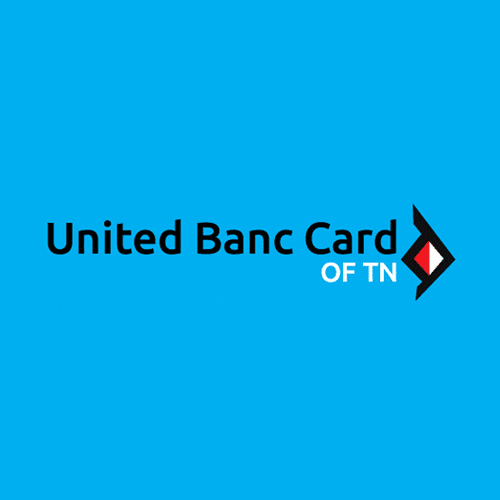In the fast-paced and competitive world of restaurants, having a reliable point of sale (POS) system is essential for smooth operations. A quality POS system not only streamlines transactions but also helps with inventory management, reporting, and customer relationship management. With numerous options available in the market, selecting the right POS system for your restaurant can be overwhelming. We made a list of the best 5 restaurant POS systems. They are efficient, easy to use, and have advanced features. Whether you have a small cafe or a busy fine dining place, these POS systems can meet your needs and improve your business.

The Importance of POS Systems in Restaurants
1. One of the key reasons why POS systems are crucial in restaurants is their ability to streamline operations and improve efficiency. With a reliable POS system, restaurant staff can easily take orders, process payments, and manage inventory all in one place. This eliminates the need for manual calculations or paper-based systems, reducing the risk of errors and saving valuable time. Additionally, POS systems often come with features like table management and employee scheduling, which further contribute to smoother operations.
2. Another significant advantage of using POS systems in restaurants is their impact on customer service. Restaurant staff can give personalized recommendations and make sure customers have a smooth dining experience by knowing their preferences and order history. Advanced POS systems also let restaurants offer different payment options like mobile payments or online ordering, which is convenient for modern customers who want flexibility.
3. Lastly, implementing a reliable POS system helps restaurant owners gain valuable insights into their business performance through detailed analytics and reporting capabilities. These reports can provide information about sales trends, popular menu items, peak hours of operation, or even employee performance metrics. Armed with this data-driven knowledge, restaurant owners can make informed decisions regarding pricing strategies or menu adjustments that ultimately lead to increased profitability.
Point of Sale System Features and Benefits

When it comes to choosing the right point of sale (POS) system for your restaurant, understanding the features and benefits is crucial. One important feature to look for in a restaurant POS system is menu management. This allows you to easily create and update your menu items, including prices, descriptions, and modifiers. With an efficient menu management feature, you can quickly make changes as needed, ensuring accuracy and consistency across all ordering platforms.
Another key feature that a top-notch restaurant POS system should offer is table management. This feature allows you to effectively organize your dining area by assigning tables to customers and tracking their progress throughout their visit. By having a comprehensive view of table statuses – whether they are occupied or available – you can optimize seating arrangements and reduce wait times for guests.
The benefits of a robust POS system in a restaurant setting are numerous. Firstly, it streamlines order taking by eliminating manual processes like writing down orders on paper. Automating this process with a POS system makes orders more accurate and sends them directly to the kitchen without delay. Detailed sales reports are also available, giving insights into daily operations and helping with inventory management and staffing decisions. Investing in a reliable POS system improves efficiency, customer service, and profitability in restaurants.
Top 5 Restaurant POS Systems
1. Square POS: Square is a popular choice for many restaurants due to its user-friendly interface and affordable pricing structure. This system offers a range of features, including inventory management, order taking, and employee management. It also integrates seamlessly with other business tools such as accounting software and online ordering platforms.
2. Toast POS: Toast is designed specifically for the restaurant industry, making it an ideal choice for establishments of all sizes. This system offers robust features like menu customization, tableside ordering, and real-time reporting. It also provides options for online ordering and loyalty programs to help enhance customer experience.
3. Upserve POS: Upserve focuses on providing comprehensive data analytics that can help restaurant owners make informed decisions about their operations. This system offers features such as tableside ordering, inventory tracking, and staff scheduling tools. With its intuitive interface and advanced reporting capabilities, Upserve can streamline restaurant operations and improve efficiency.
4. Revel Systems: Revel Systems is known for its cloud-based point-of-sale solution that caters to both quick-service restaurants and full-service establishments. This system provides features like inventory management, customer relationship management (CRM), and even self-ordering kiosks in some cases. Revel also offers integrations with various third-party applications to optimize business processes.
5. Lavu is recognized for its cloud-based point-of-sale solution, which serves both quick-service restaurants and full-service establishments. This system offers functionalities such as inventory management, customer relationship management (CRM), and even self-ordering kiosks in certain instances. Additionally, Lavu provides integrations with diverse third-party applications to enhance business operations.
Comparison of Key Features and Pricing

In comparing the key features and pricing of the top 5 restaurant POS systems, several factors come into play. One important feature to consider is inventory management. Some systems offer robust inventory tracking capabilities, allowing restaurants to easily manage stock levels, track ingredient usage, and generate automatic purchase orders when supplies run low. Others may have more basic inventory functions or require add-ons for advanced features.
Another key feature to compare is table management. Restaurants with high table turnover need a system that can efficiently handle reservations, waitlists, and seating arrangements. Advanced table management features can include visual floor plans that show real-time occupancy status and integration with kitchen display systems for seamless order routing.
When it comes to pricing, it’s crucial to evaluate not only the initial setup cost but also ongoing fees such as monthly subscriptions or transaction charges. Some POS systems offer tiered pricing plans based on the size of the restaurant or number of terminals required. It’s important for restaurant owners to carefully assess their specific needs and budget constraints before choosing a system that offers both the necessary features and an affordable pricing structure.
Overall, by thoroughly examining the key features offered by each POS system along with their corresponding pricing structures, restaurant owners can make an informed decision about which option best meets their business requirements while staying within their financial means.
Power Up Your Business with Secure, Affordable,
and Efficient Payment Solutions
Customer Reviews and Recommendations
Customer reviews and recommendations are important when choosing a restaurant point of sale (POS) system. With many options available, reading reviews gives insight into the strengths and weaknesses of different systems. Analyzing feedback from users helps restaurant owners understand how well a system performs in real-world situations. Positive reviews highlight features like easy-to-use interfaces, integration with other software, and good customer support. Negative reviews point out issues like slow processing, glitches, or poor technical help.
Recommendations from fellow restaurant owners who have successfully implemented certain POS systems can also be incredibly influential. These recommendations often carry more weight due to their first-hand experience with specific platforms. By considering these recommendations alongside customer reviews and conducting thorough research on various aspects like affordability, scalability, and customization options offered by different POS systems, restaurant owners can make informed decisions that align with their unique business needs and goals.
Conclusion: Choosing the Right POS System
In conclusion, choosing the right POS system for your restaurant is crucial to the success and efficiency of your operations. With so many options available in the market, it is important to carefully consider your specific needs and requirements before making a decision.
Firstly, look for a POS system that offers user-friendly features and an intuitive interface. This will ensure that your staff can easily navigate through the system without much training or confusion. Additionally, consider a system that integrates seamlessly with other software and hardware you may already have in place, such as inventory management or accounting systems.
Secondly, it is essential to choose a reliable and secure POS system. Look for features like data encryption, regular backups, and robust security measures to protect both customer information and your business data. A reliable support team that can provide timely assistance in case of any issues or concerns should also be considered.
Finally, take into account the scalability of the POS system. As your restaurant grows, you may need additional functionalities or expansions within your operations. Choosing a flexible POS solution that can accommodate these changes will save you time and money in the long run.
By carefully evaluating these factors before making a decision on which POS system to choose for your restaurant, you can ensure smooth transactions, efficient operations, improved customer experience, and ultimately increased profitability for your business.



